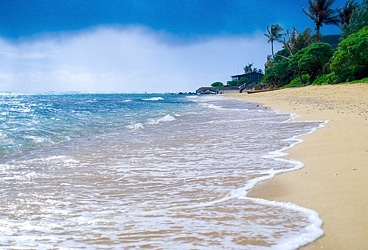Kauai: Polynesian Rush
Some compare it to the invention of the wheel. Others, to the moon landing. Polynesian voyagers in the 15th century explored 10 million square miles of the Pacific Ocean, settling islands as farflung as New Zealand, Easter Island and Hawaii hundreds of years before European sailors entered the Pacific. Those pioneers' transportation? Voyaging canoes.
With the Hawaiian Sailing Canoe Association, whose mission is to perpetuate the art of wayfinding, or traditional navigation practices, hop aboard and feel the rush as you paddle in unison with your fellow sailors' steady beat. Your short sail around the bay may pale in comparison to the world's earliest sailors who plied vast swaths of water in narrow canoes, but you'll walk away with an appreciation of those pioneers' fortitude and skill.
Or watch the HSCA celebrate sailing canoes another way: through racing. Fiberglass has replaced the wood of ancient hulls, and polyester has supplanted the plaited, narrow leaves of sails, but the basic design of today's vessels is virtually unchanged from the original. Throughout the summer, competitors sail Hawaii's islands, crossing open oceans, braving treacherous winds and waves and — on those rare days when trade winds fail — powering their 1,000-plus-pound canoes with nothing but human brawn.
On race days, join hands with competitors in the pre-race pule, or blessing, and talk story on the beach following the race's finish — sometimes eight hours after the starting flag is raised. You'll soon understand the ancient Hawaiian canoe proverb: "Au i ke kai me he manu ala" That is, "to cross the sea like a bird."
Plan Your Trip
-
Time your trip to the island of Kauai to see racers from Oahu arrive on the shores of Kalapaki Bay on August 9. On September 13, the season's final race starts in Kalapaki and ends in Hanalei Bay.
-
Charter a sunset cruise along Hanalei Bay aboard a sailing canoe through Island Sails. islandsailskauai.com.
-
Learn more at hsca.biz.
